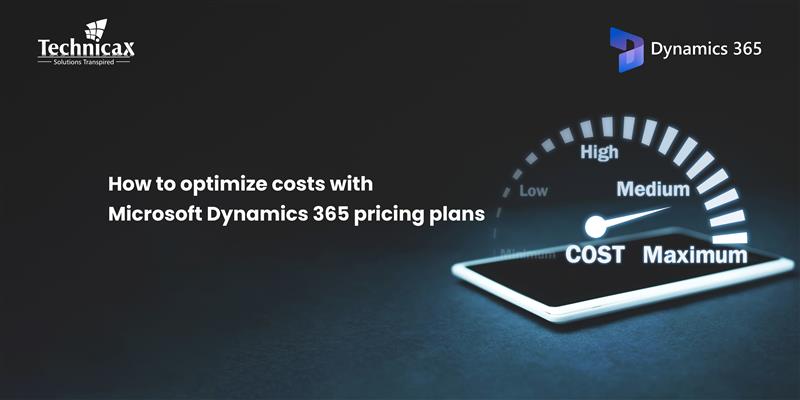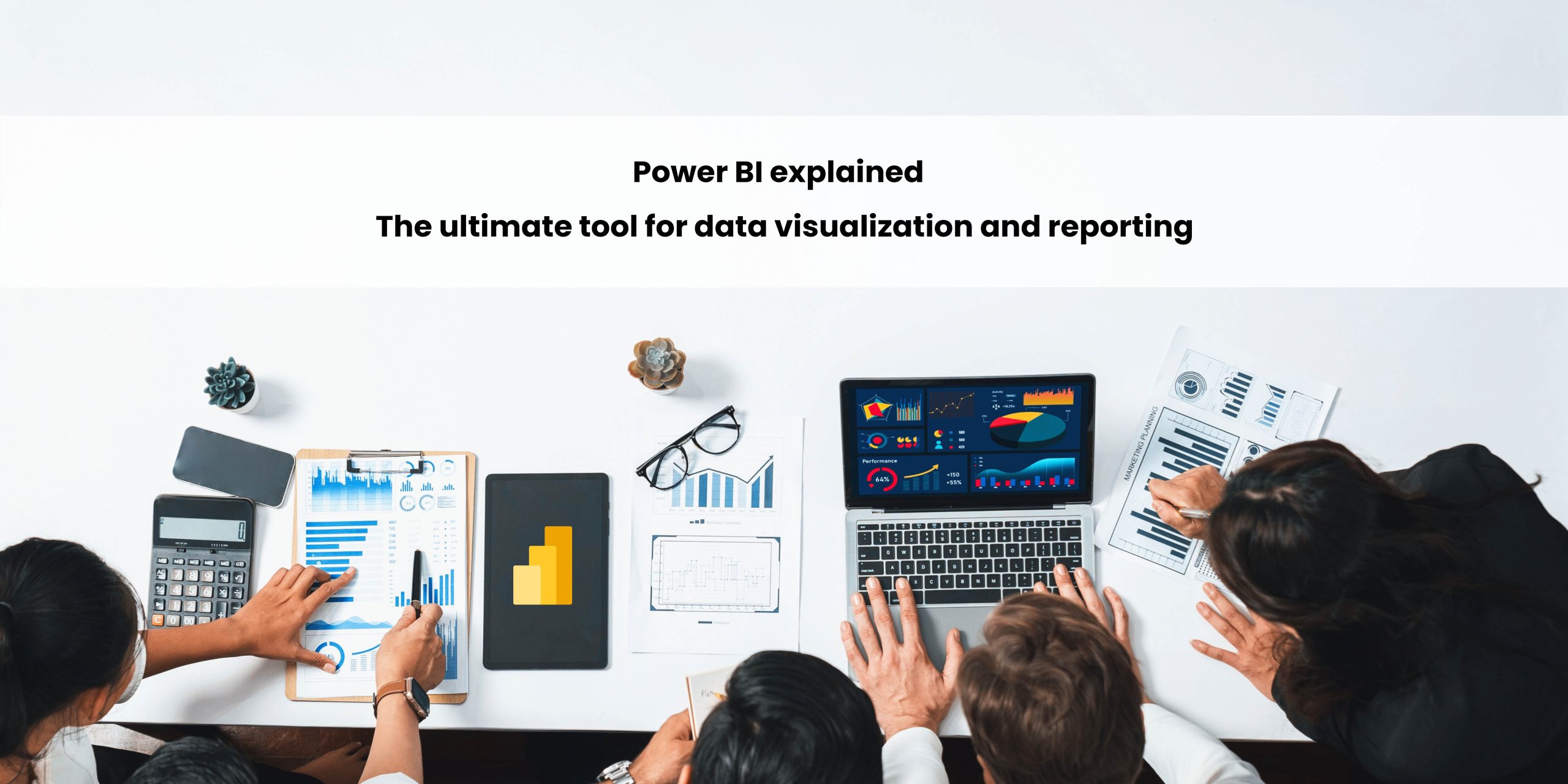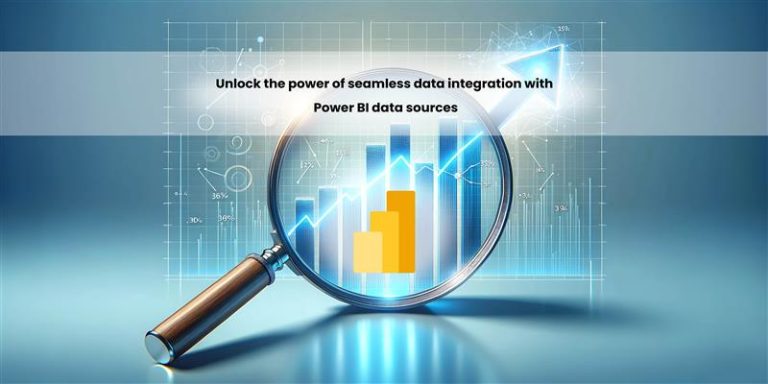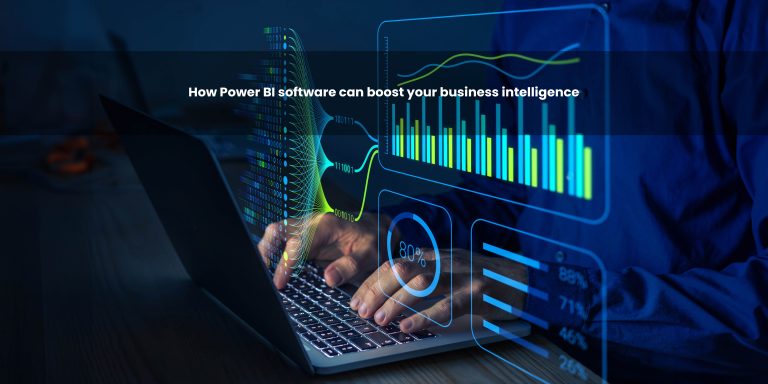Businesses are depending more and more on technologies that can help them make sense of the massive volumes of data they generate in today’s data-driven environment. One such effective tool that helps businesses realize the full potential of their data is Power BI.
Knowing the functions of it will enable you to take use of its capabilities for enhanced decision-making, more efficient reporting and better company performance, regardless of your role as an executive, business manager or data analyst.
What is Power BI?
At its core, Power BI is a business analytics service from Microsoft that provides interactive visualizations and business intelligence (BI) capabilities. It allows users to connect to a wide range of data sources, transform that data and visualize it in dashboards and reports. So, what does it stand for? It’s essentially a tool that simplifies data analysis and reporting for users of all skill levels. With Power BI, you can make data-driven decisions, uncover insights and share them in real time.
Reporting and Data visualization
When it comes to Power BI reporting, the possibilities are endless. Whether you’re monitoring key performance indicators (KPIs), tracking financial performance or analyzing customer behaviors, it helps you create dynamic, interactive reports that provide deep insights at your fingertips.
But it doesn’t stop there, it turns your data into stunning visualizations. With everything from pie charts to heat maps, Power BI data visualizations are designed to make your data not only easier to understand but also more impactful. Imagine interacting with a dashboard where you can drill down for deeper insights, hover over to reveal hidden details and visualize trends with just a click. It’s data storytelling at its finest!
Architecture – Behind the magic
Understanding the architecture helps you see how seamlessly it works to connect data from different sources and deliver powerful insights. Built on a cloud-based architecture, it integrates three key components
- Desktop – The tool for creating reports.
- Power BI Service – The cloud-based platform for sharing, collaborating and accessing reports.
- Mobile – For accessing and interacting with reports on the go.
What makes it truly special is its flexibility. Whether you’re working with cloud services, SQL databases or real-time data sources, Power BI can handle it all.
Connecting your data universe
In the world of cloud solutions, Power BI Cloud is a crucial player. The Power BI Service, the cloud-based version of it, allows teams to access and collaborate on reports in real-time, wherever they are. Whether you’re at the office or on the go, you can keep your finger on the pulse of your business, anytime, anywhere.
And when it comes to Power BI data sources, the platform is an integration powerhouse. It connects effortlessly to everything from Excel and SQL databases to Salesforce, Google Analytics and more. With Power BI, you can consolidate data from multiple sources into one easy-to-read dashboard, making decision-making faster and more accurate.
Power BI vs Tableau – Which is right for you?
The age-old debate
Power BI vs Tableau. While both tools offer powerful data visualization and reporting capabilities, each has its strengths. It stands out for its integration with Microsoft products, making it the ideal choice for organizations already using tools like Excel, SharePoint and Azure.
On the flip side, Tableau offers more advanced visualization options and a bit more flexibility for those with complex needs. If you’re weighing Power BI vs Tableau, it’s about finding the right balance between ease of use and advanced functionality. And if you’re looking for alternatives, Looker and Qlik are other options that offer specialized features for businesses with unique reporting needs.
Why it matters to your business?
So, what does it mean for your business? It means empowering your team to make data-driven decisions that boost operational efficiency, drive innovation, and accelerate growth. With its user-friendly interface, vast integration capabilities and cloud-based features, it is more than just a tool—it’s a catalyst for transformation.
Tailored to your needs
It is designed to meet a variety of needs. Whether you’re a small business or a large enterprise, there’s a version that fits your requirements
- Desktop – Free for individual users, ideal for creating reports.
- Pro – For individual users and teams who need advanced features.
- Premium – For organizations with complex needs and large-scale reporting.
Additionally, it supports multiple languages, making it the perfect solution for businesses with international teams.
Power BI Demo – Take it for a spin
Curious to see it in action? A Power BI demo is the best way to experience the magic yourself. Explore tutorials, attend live session or check out Microsoft’s official guide to see how easy it is to turn your data into valuable insights.
In Conclusion
To wrap it up, Power BI isn’t just another analytics tool, it’s a business intelligence powerhouse that empowers organizations to make smarter decisions, visualize data more effectively, and boost productivity. From its advanced reporting capabilities to its seamless integration with the Microsoft ecosystem, It is an essential tool for any business serious about data-driven growth.
If you’re ready to unlock the power of your business data, dive into it and discover how it can transform your operations.
Ready to explore further? Check out this Power BI guide from Microsoft and start your journey today!
Check out the related blogs for further reading

How to optimize costs with Microsoft dynamics 365 pricing plans
Microsoft Dynamics 365 pricing can be complex, but with the right approach, businesses can control costs while maximizing…

Dynamics 365 pricing and licensing – what you need to know
Microsoft Dynamics 365 is a cloud-based suite of business applications designed to help organizations manage operations efficiently. It…

Dynamics 365 Fraud protection – key features and benefits for businesses
Fraud is a growing concern for businesses, significantly impacting revenue, security, and customer trust. As digital transactions continue…








